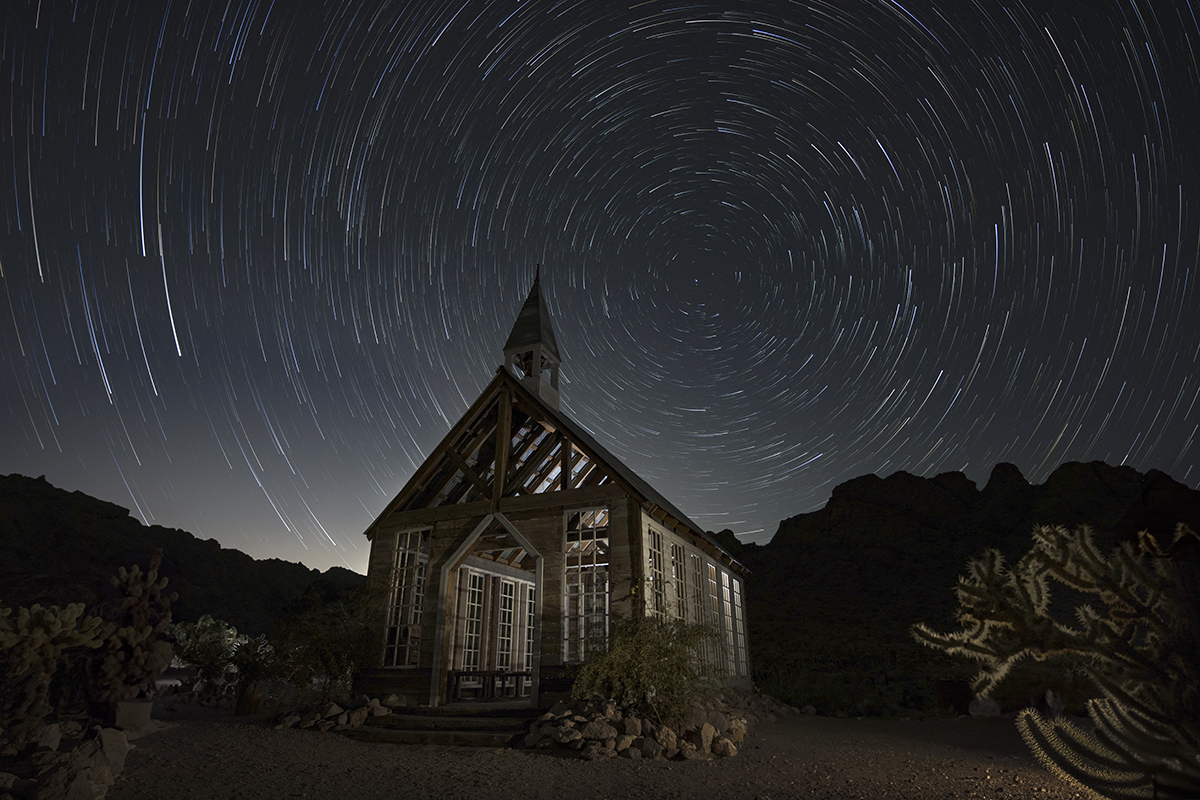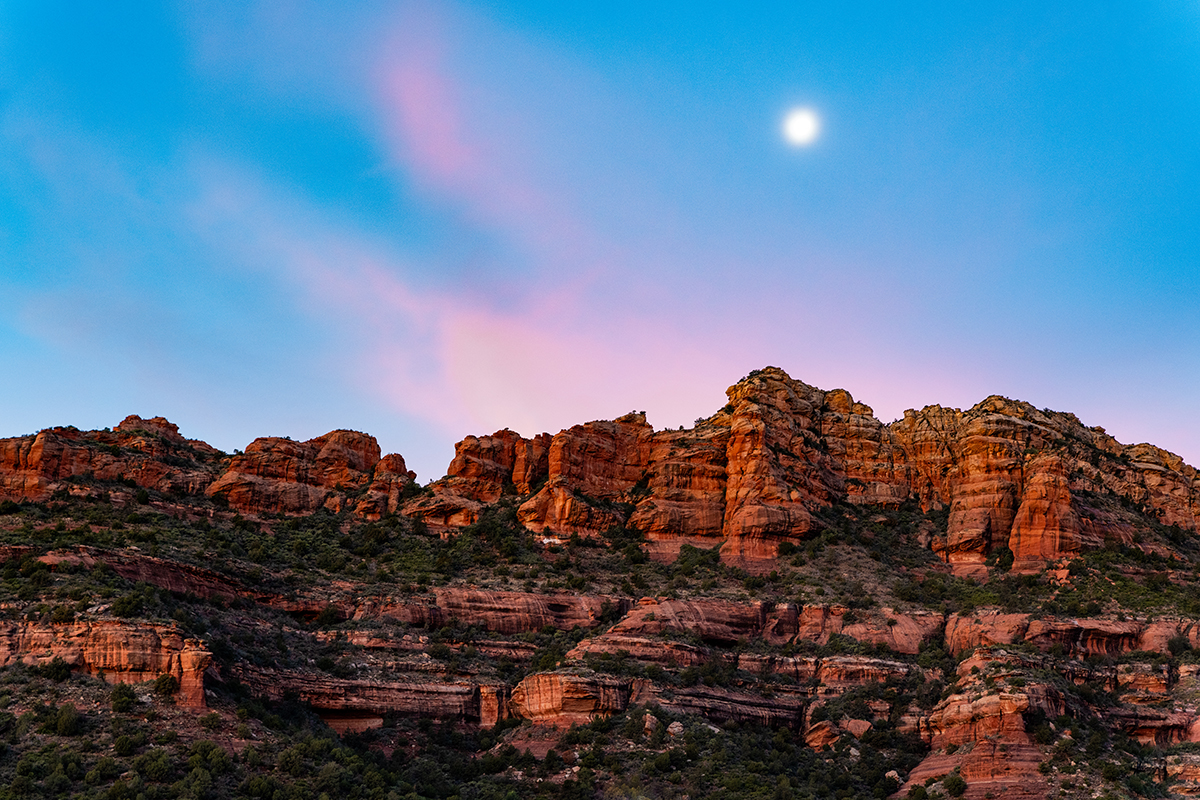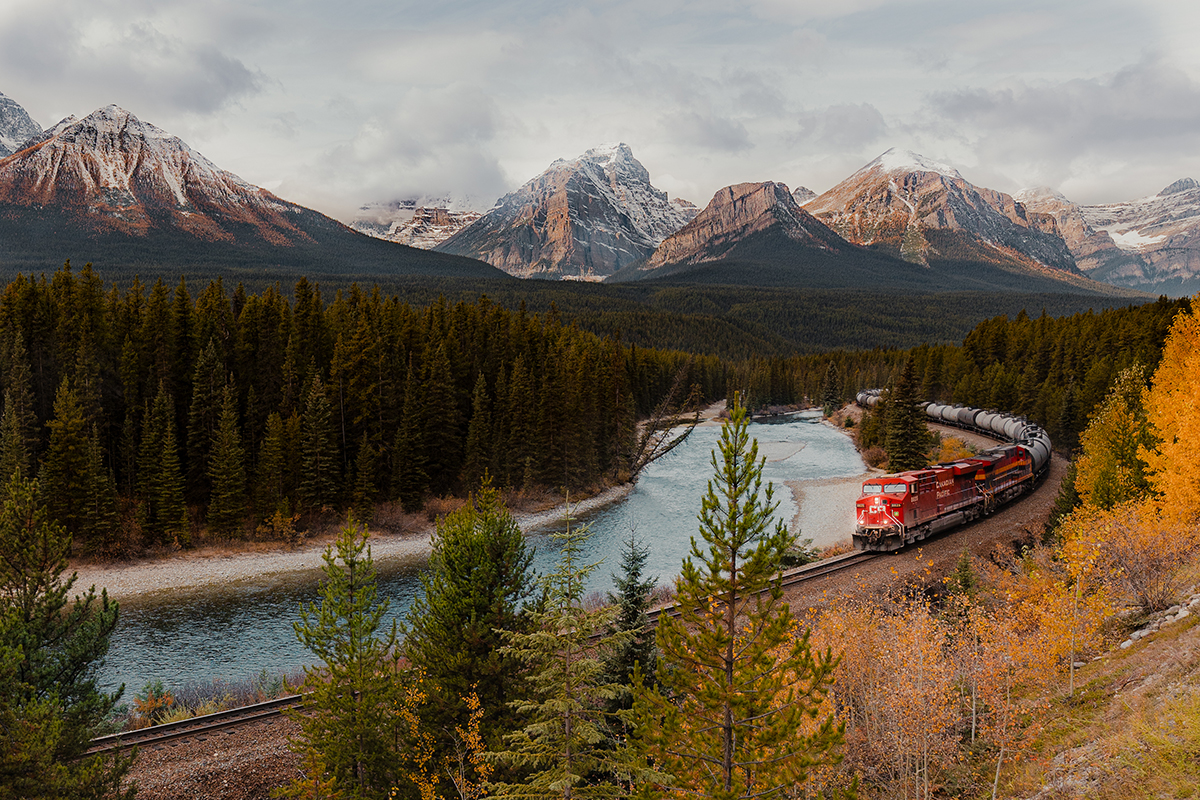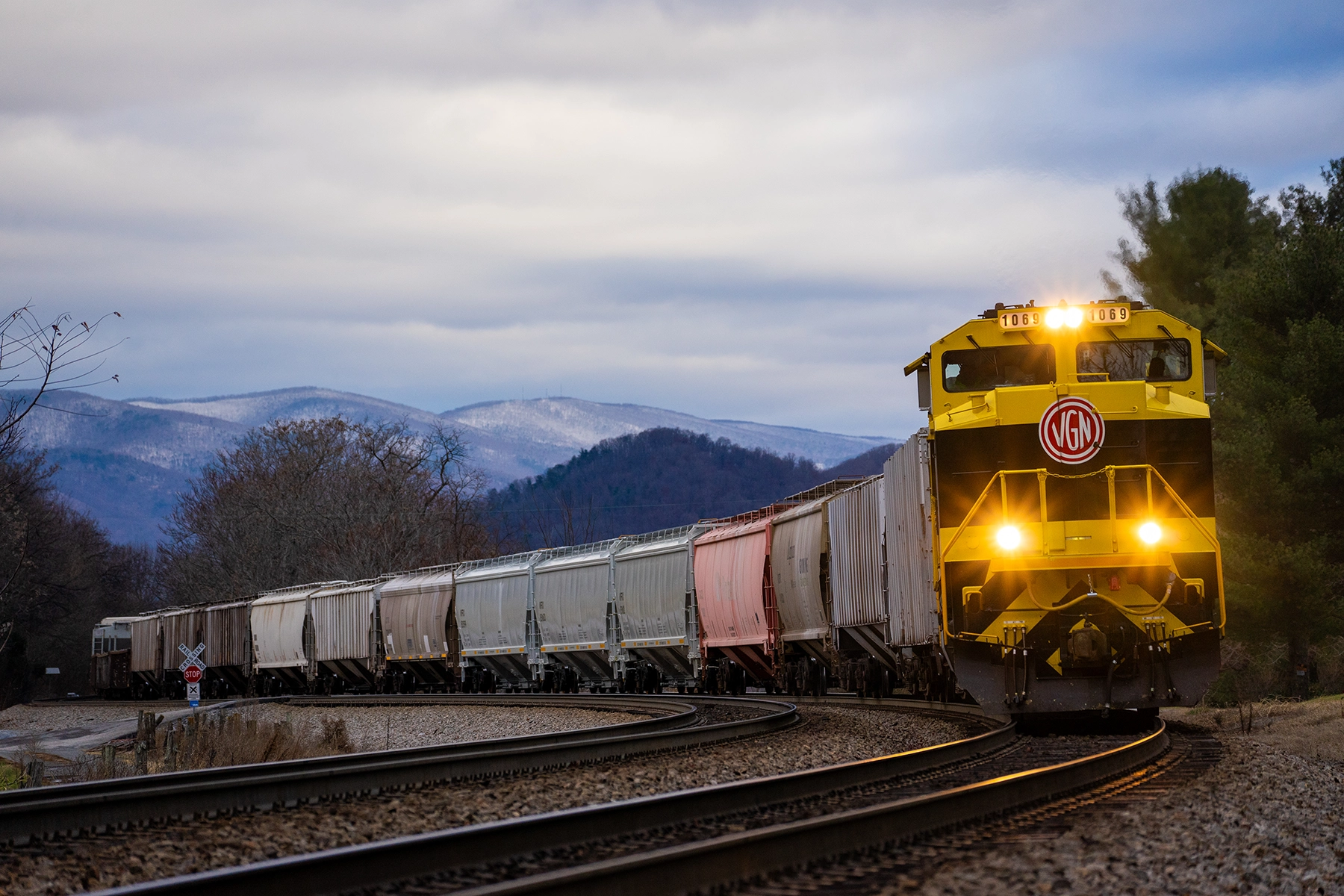
On the Right Track for Train Photographs
Danny Scholl stays on the lookout for locomotives with his Tamron 70-300mm telephoto lens.
Author: Jenn Gidman
Images: Danny Scholl
Share Article
When Danny Scholl was a boy growing up in Pennsylvania, he was enamored with trains. “I lived near Strasburg, in Lancaster County, which is a very famous railroad town,” he says. “There were a lot of steam engines there, and a lot of history. As I moved into adulthood, my interest grew into learning more about trains and photographing them.”

Today, Danny calls Virginia’s Shenandoah Valley home, with its picturesque landscapes and, yes, more trains. “I live here with my girlfriend, Kris, and our family, and it’s just a calmer, simpler way of life,” he says. “When I first started taking pictures of the trains around here, I was doing so on my iPhone. Kris has been taking pictures a lot longer than me, though, and she soon got me into using an actual camera to create my train photos. What’s great is that we share this passion for photographing trains, and it’s how we spend our free time. I’m constantly inspired by her creativity.”Danny’s lens of choice when he’s on the lookout for locomotives is the Tamron 70-300mm Di III RXD telephoto lens for his Sony mirrorless camera system. “I’m a telephoto guy—I love to zoom in, with my favorite images often at 180mm or above,” he explains. “The focal-length range of this lens offers me the ultimate in flexibility, allowing me to zoom out to capture a wider scene or zoom in to focus on a train’s details. The 70-300mm has also performed really well for me in low light, which is important when I’m out there at dusk or in inclement weather. The lens is also compact and light, so I can spend the whole day chasing trains without feeling weighed down.”
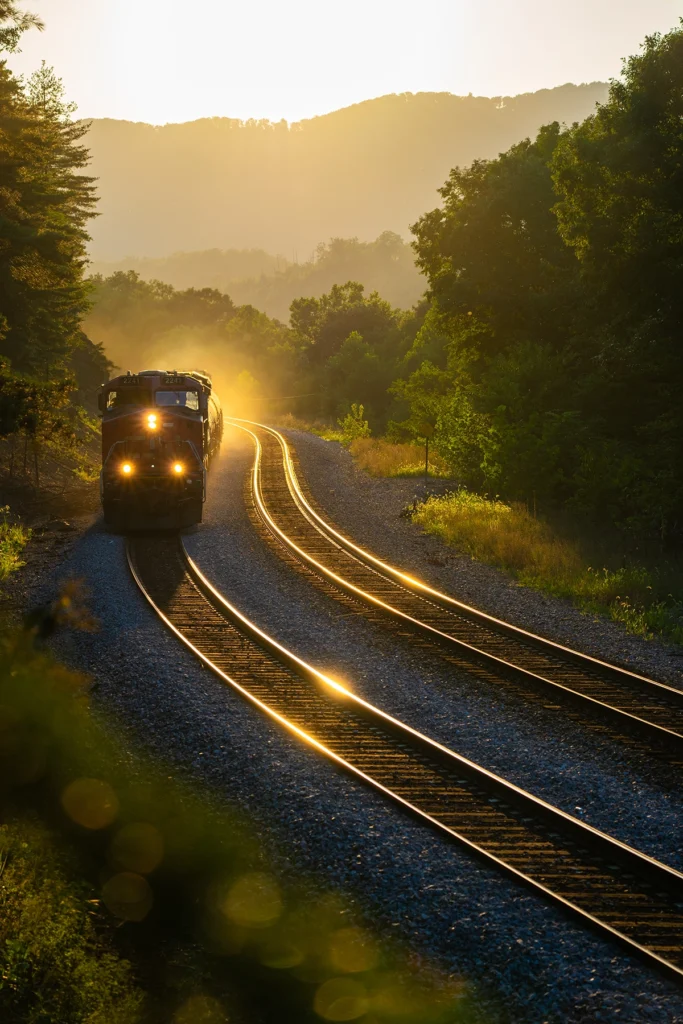
When Danny places a train in his viewfinder, he’s not simply trying to capture the cars and rails beneath them. “I aim to create scenes that feel special, and that means taking my time to craft just a few, carefully planned-out shots,” he says. “Even just a year or so ago, Kris and I would try to cram in viewing 10 to 15 trains a day, in various locations. Now, we’re more selective in where and how we shoot. We’ll drive an hour just to capture two photos.”
There are three boxes that Danny tries to tick when he’s on the hunt for rail-themed subjects, which he shows off on his Instagram page. “First, I look for a gorgeous location,” he says. “Next, I ensure the conditions for shooting are ideal—that includes the lighting and weather. Finally, I try to find all different kinds of interesting-looking trains. I look for unique paint schemes, historic engines, or locomotives that simply stand out. If we’re able to check off one or two of those boxes, we’ll likely come away with decent photos. When we check all three, we jump up and down for joy and high-five each other. There’s no other feeling like it.”
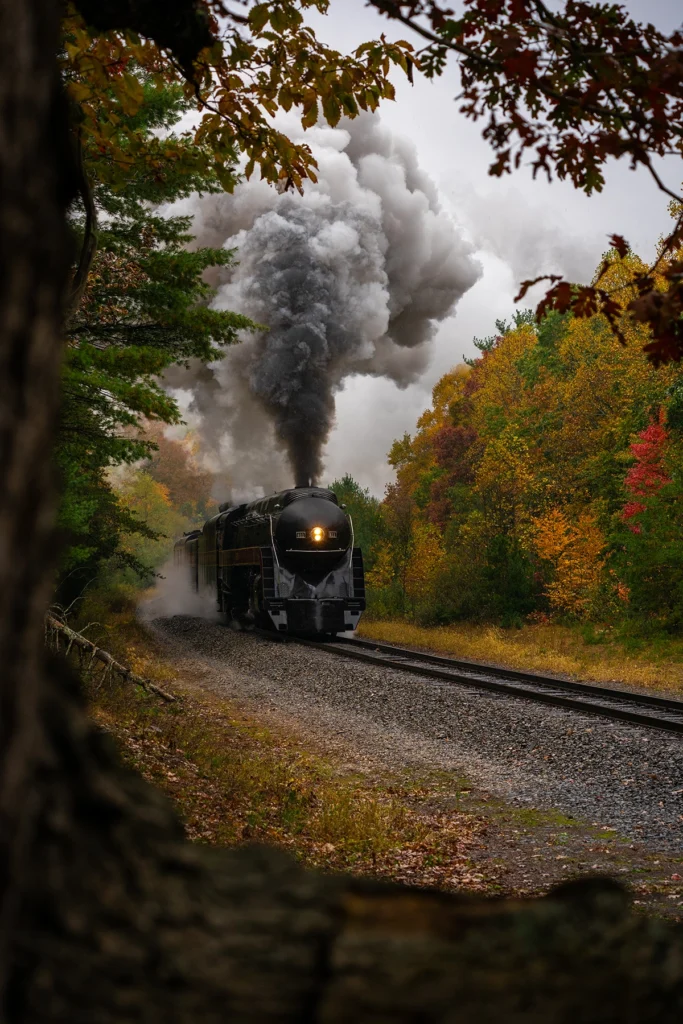
PHOTO TIPS: TRAIN PHOTOGRAPHY
1. Track down the trains.
Passenger trains run on schedules, but freight trains are far more erratic. That’s where the rail-fan community comes into play—you’d be surprised how many people like to chase trains. There are various groups on social media where fellow rail enthusiasts share real-time information. For instance, someone in Pittsburgh will post that there’s a cool-looking train heading east that will arrive in Altoona in a few hours, which gives me a chance to get out there. We also listen to radio scanners and check out “rail cams” with live feeds so we can see where trains are passing through at any particular time.
2. Look to the light.
Kris and I call ourselves lighting snobs, because we prioritize how the light falls in our photos. It’s important to sync up what time a train might be passing through and where the sun will be at that time of day, then plan your positioning accordingly. Personally, I don’t prefer to shoot backlit trains. Where we live in Virginia, I try to capture southbound trains as they head into the sun, as well as westbound trains trekking up into the mountains, because that’s when the light hits them best.
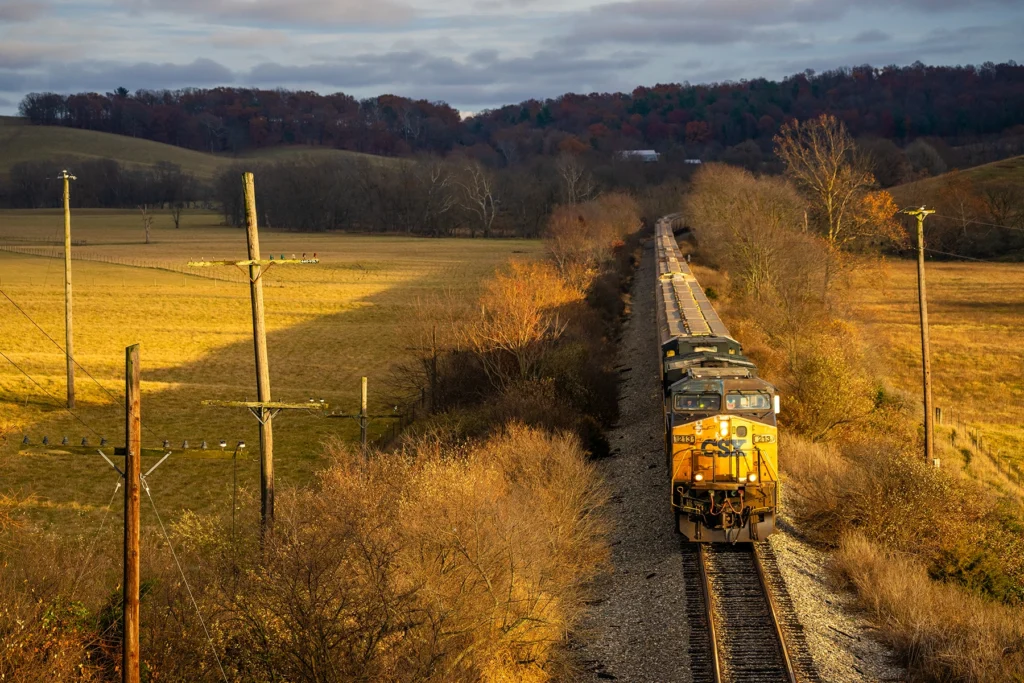
3. Inclement weather is your friend.
My favorite time to shoot is in the early morning, when it’s not only calm and tranquil, but also offers some spectacular weather conditions. Fog, for instance, adds instant atmosphere to any photo. I feel the same way about shooting in the rain or snow, when I’ve captured some of my favorite images.

4. Find compelling perspectives.
I love to create depth in my train photos, especially when a train is approaching from afar. The 70-300mm offers me stellar compression when I’m fully zoomed in at 300mm, so I can show off details like the undulations of the train tracks and the environment around the train. Framing is important, too. When the leaves start to fall off the trees in the winter, I’ll position myself 50 feet or so back in the woods and try to find a window through those trees to shoot through, zooming in on the train and framing it that way. As for how to photograph a train, you can take pictures of a train’s nose, shoot it from the side, or capture it as it disappears into the distance. You can take pictures of a train coming straight down the track or while it’s navigating a curve. Sometimes you might want the train big and bold in your image, other times it might be fun to make the train appear small amid a larger scene. I also enjoy when the train seems to be the only man-made element in the photo, set against nature. It’s all about experimenting and finding the composition that best tells the story you want to convey.
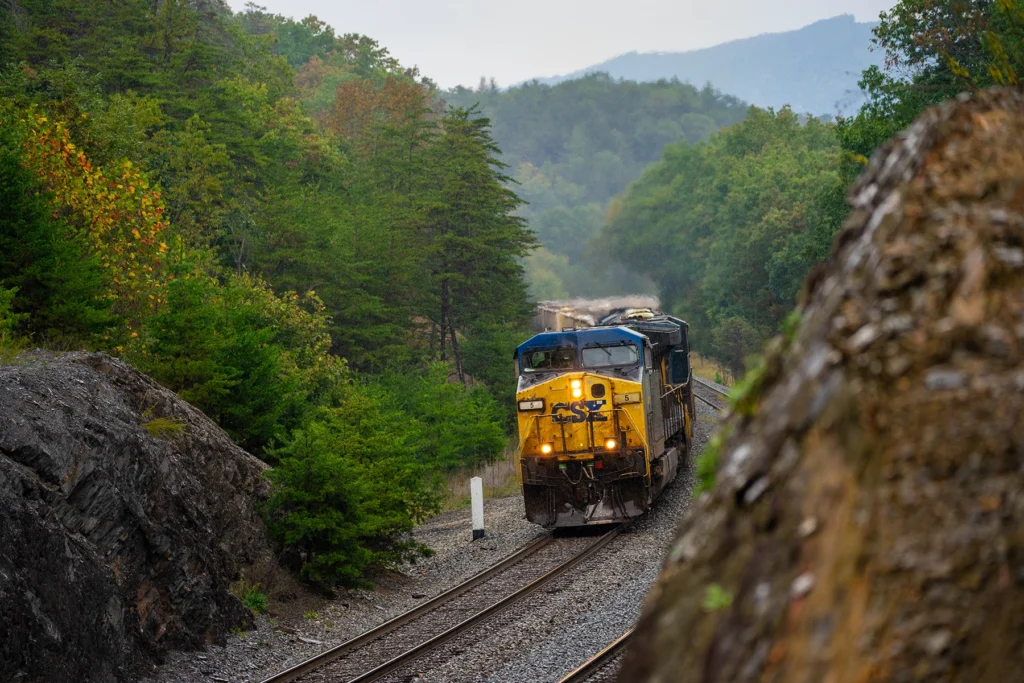

5. Team up with other photographers.
I’m so lucky to share my train photography passion with Kris, but anyone can make friends and enjoy the hobby with other local railfans. Even if you’re shooting the exact same scene, it’s fascinating to see how different your photos can turn out. With moving subjects like trains, it can be fun to compare shutter speeds or other variables to see what may have accounted for those differences, or to consider where your partner positioned themselves to capture their photos.
6. Mentor young artists.
So many kids are into trains, and into taking pictures of them, which is very cool. Some people may depict train photography as kind of a nerdy hobby, but many young people turn to it as a type of sanctuary and a way to escape everyday stress, so Kris and I go out of our way to encourage them whenever we can. It’s important to us to nurture budding photographers where we find them, whether they’re taking photos with their phone, a DSLR, or a mirrorless camera system like I do.
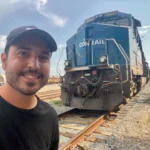
ABOUT: DANNY SCHOLL
“I have way too much fun chasing shots and photographing trains with my other half, Kris.Our family is lucky to call the ShenandoahValley home. Weekends are usually aspontaneous adventure, wherever the trains take us. We love exploring new places, andalways look for interesting local coffee shops, breweries and restaurants to check out.”
Follow to see more of Danny’s work on Instagram @_railfan_dan
